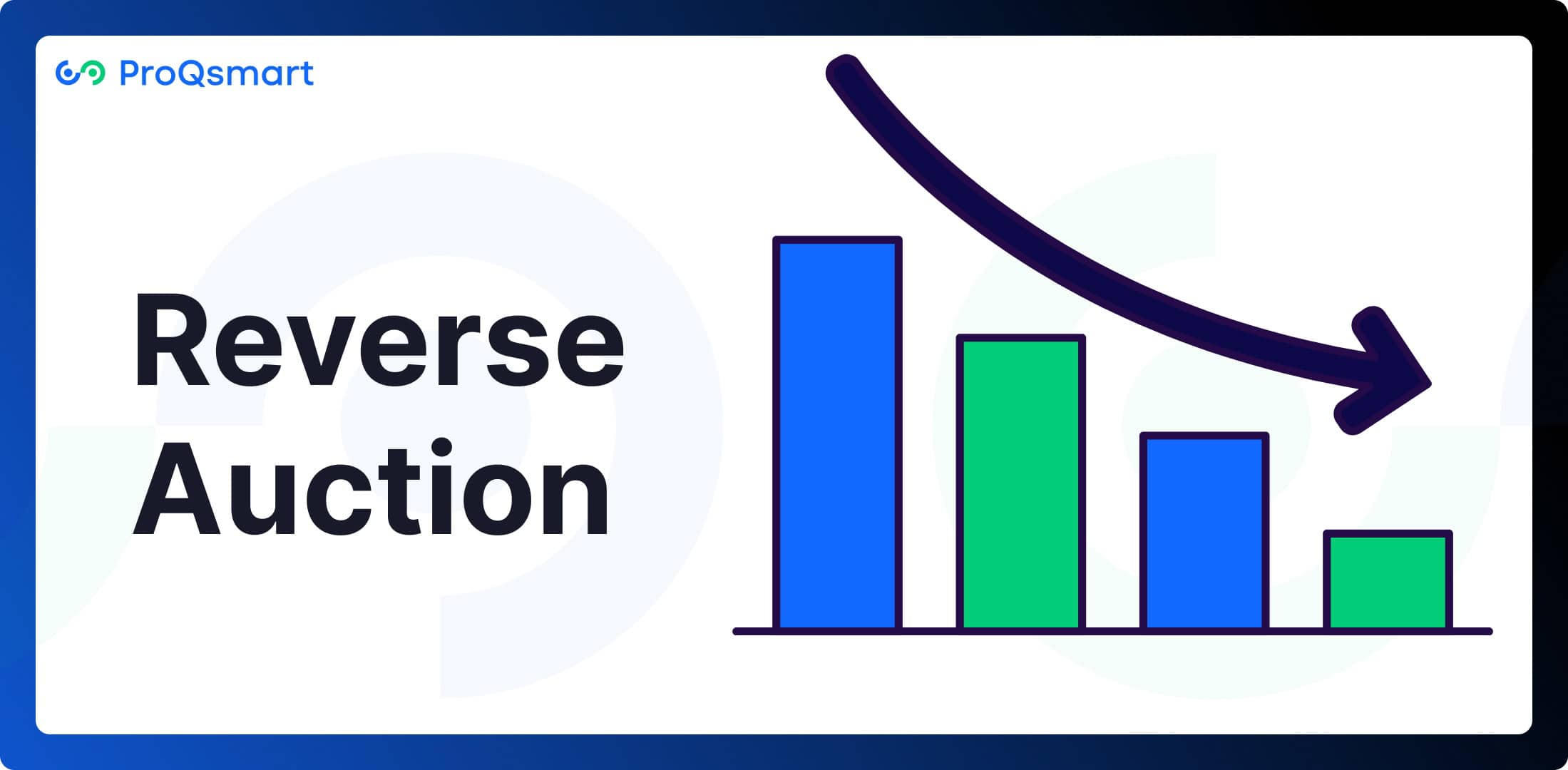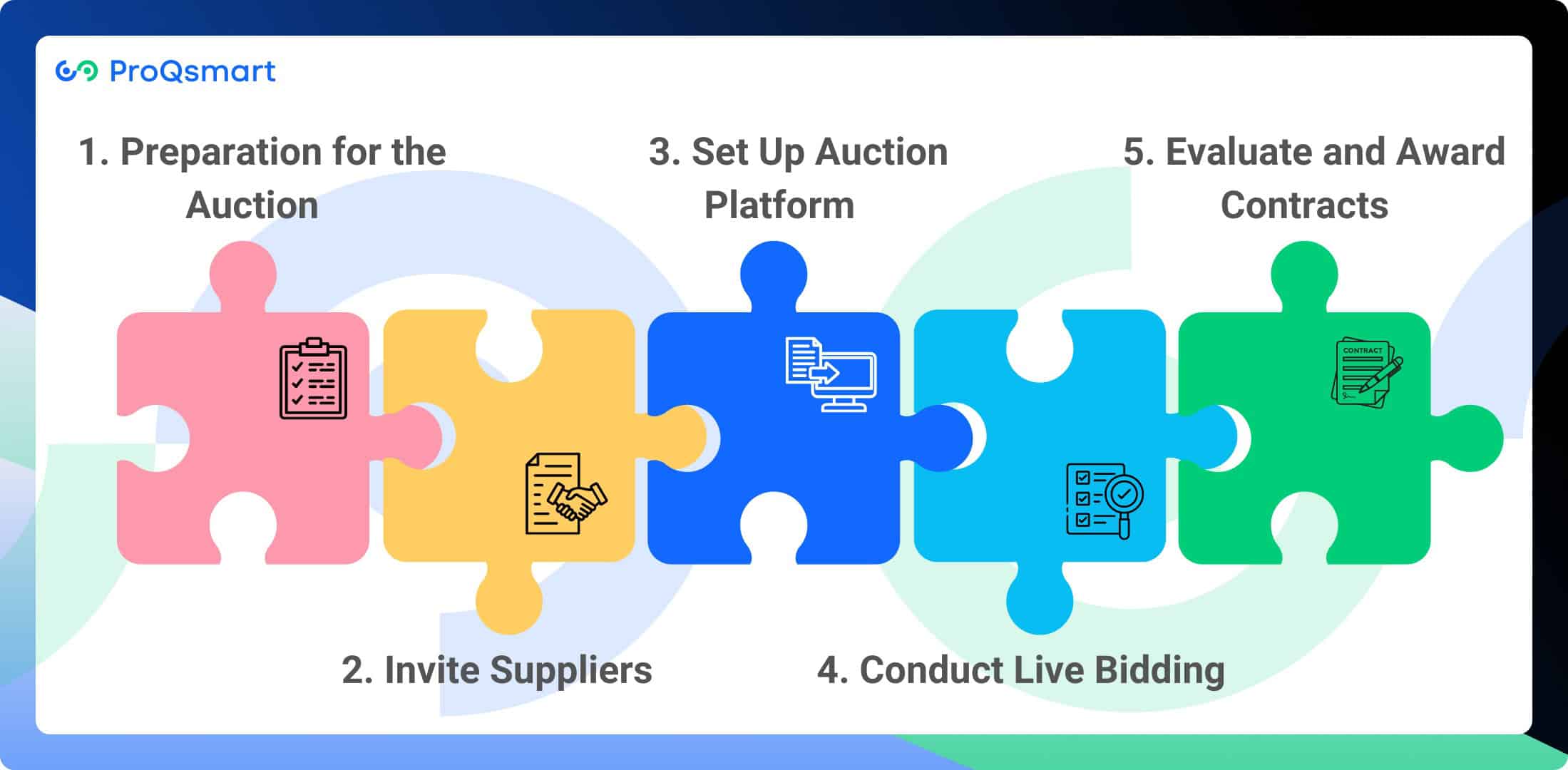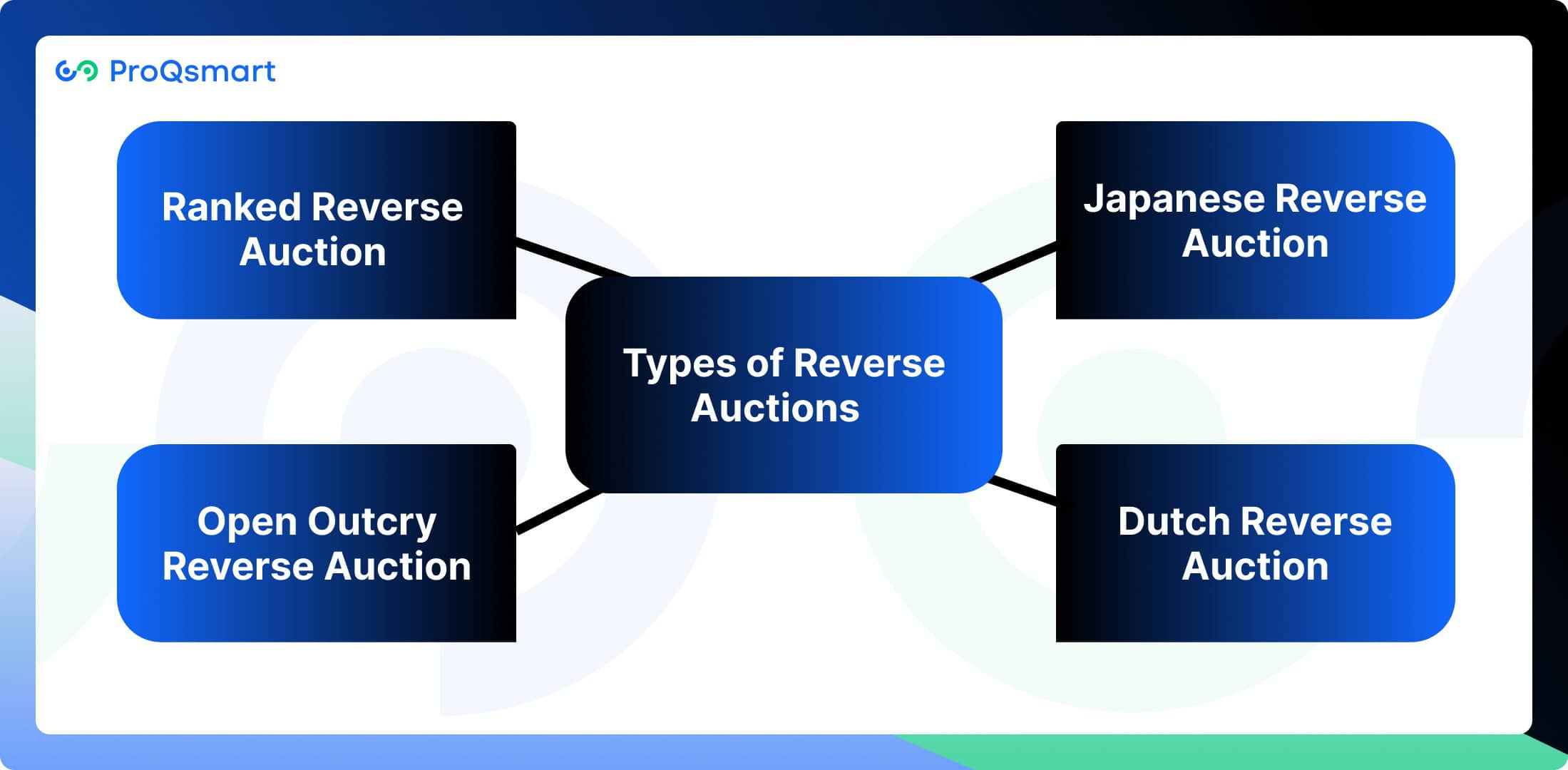Reverse auctions are revolutionizing the procurement process by fundamentally changing how bidding is conducted. In this model, suppliers bid down the price they are willing to accept for their services, leading to significant cost savings and enhanced transparency.
Understanding and leveraging reverse auctions can empower you to drive efficiency and encourage innovation within your organization’s processes. By adopting this approach, you can position your business for long-term success in the evolving procurement landscape.
This article will walk you through the process of reverse auctions and highlight their numerous benefits in procurement. You will discover how reverse auctions simplify supplier selection, reduce purchasing costs, and foster collaboration with suppliers. For organizations prioritizing competitive pricing, reverse auctions offer an effective strategy for maximizing value while minimizing expenses.
What is a Reverse Auction?

A reverse auction is a type of auction in which sellers compete to offer the lowest price for goods or services to secure a contract from a buyer. Unlike traditional auctions where buyers bid to purchase items, reverse auctions invert the model, with sellers progressively lowering their bids to win the buyer’s business.
This is a way for organizations and sellers to compete intensely for the attention of a single buyer. They submit bids at prices lower than the buyer’s set reserve price. This process is largely done online to ensure the highest level of efficiency and accessibility, providing millions in potential cost savings.
Buyers are the big winners. Auctioneers know that the competitive auction setting produces lower prices.
Reverse Auction vs Traditional Auction
The following table outlines the key differences between traditional auctions and reverse auctions, highlighting their unique characteristics and applications.
Aspect | Traditional Auction | Reverse Auction |
Bidding Dynamics | Buyers compete against each other, raising prices. | Sellers compete against each other, lowering prices. |
Focus | Buyers seek to obtain goods or services at the highest price. | Sellers aim to attract buyers by offering the lowest price. |
Information Flow | Sellers present items, and buyers bid higher. | Sellers provide specific product information to attract buyers. |
Market Dynamics | Driven by buyer demand; sellers benefit from higher bids. | Driven by seller competition; buyers benefit from lower prices. |
Industries Benefiting | Suited for low-volume or unique needs, often manual. | Ideal for construction (materials, subcontractors) and manufacturing (components, machinery), ensuring cost efficiency. |
Cost Savings | Prices may increase due to bidding wars among buyers. | Significant cost savings through competitive bidding among sellers. |
Supplier Relationships | May foster long-term relationships through negotiation. | Encourages competitive pricing and transparency, ensuring fair value and trust in the procurement process |
Transparency | Less transparent; buyers may not know competitors’ bids. | High transparency; all suppliers can see current bids and adjust accordingly. |
Use Cases | Suitable for small-scale, low-complexity procurement tasks with minimal supplier competition. | Ideal for standardized products and services with multiple suppliers, enabling real-time bidding, cost efficiency, and streamlined procurement workflows
|
How Does Reverse Auction Works?

The reverse auction process is a revolutionary approach to procurement auctions that fundamentally changes how organizations interact with suppliers. By following specific auction protocols within a disciplined step-by-step procedure, companies can save time, avoid headaches, and achieve the best bid results.
1. Preparation for the Auction
Clearly outline the specifications and requirements for the goods or services needed, including quality standards, quantities, and delivery timelines. Develop a comprehensive procurement template that serves as a blueprint for the auction.
Research market conditions to set realistic reserve pricing based on current trends and competitor pricing. Identify potential suppliers who have the capability and experience to meet your requirements.
Create a detailed timeline for the auction process, including preparation, bidding, evaluation, and contract award phases. Communicate this timeline to all stakeholders to ensure everyone is aligned on expectations.
Prepare all necessary documentation in advance, including bid forms and terms of reference, to expedite the auction process.
2. Invite Suppliers
Identify and create a list of suppliers who meet the qualifications necessary to participate in the auction, considering factors such as past performance, financial stability, and industry reputation.
Send out formal invitations to the shortlisted suppliers with clear instructions on how to participate in the auction, including relevant details such as auction specifications and timelines.
Share background information about your organization and specific expectations regarding the bidding process. Encourage suppliers to ask questions or seek clarifications before the auction begins.
3. Set Up Auction Platform
Select a reputable online auction platform such as ProQsmart that supports reverse auction features and is user-friendly for both buyers and suppliers. Additionally, ProQSmart incorporates robust security measures to protect user data and maintain the integrity of the bidding process. This makes it a reliable choice for organizations looking to conduct reverse auctions effectively.
Set clear rules for the auction, including start and end times, minimum bid increments, and any restrictions on bid submissions. Define how bids will be displayed during the auction.
Test the platform prior to the auction day to ensure all features function correctly. Provide training sessions or resources for suppliers to familiarize them with using the platform effectively.
4. Conduct Live Bidding
- Maintain constant oversight during the live bidding process to ensure everything runs smoothly and address any technical issues promptly.
- Provide regular updates on bid standings throughout the auction to keep suppliers engaged and encourage competitive bidding. Transparency about current bids fosters trust among participants.
- Document every bid submitted during the auction for future reference and analysis. This data can be valuable for evaluating supplier performance and improving future auctions.
5. Evaluate and Award Contracts
Assess bids based on predefined criteria such as price, delivery terms, quality standards, and compliance with specifications. Use an objective scoring system to minimize bias in decision-making.
Inform all participants of the results of the auction promptly and provide feedback on why certain bids were successful or unsuccessful. This communication helps maintain positive relationships with suppliers for future opportunities.
Once a supplier is selected, finalize contract terms based on the winning bid. Ensure all legal requirements are met before signing, establishing clear expectations regarding deliverables, timelines, and payment terms in the contract.
Types of Reverse Auctions

Reverse auctions are powerful tools for competitive procurement, and they come in various forms depending on the specific goals of the purchasing organization. The four main types of reverse auctions are:
Ranked Reverse Auction: Ideal for procurement processes where suppliers are evaluated and ranked based on multiple factors like price, quality, and delivery terms.
Japanese Reverse Auction: Largely used in industries like manufacturing, construction, and automotive for real-time, competitive bidding.
Dutch Reverse Auction: Commonly applied in procurement, where the auction starts with a high price that decreases until a supplier accepts the bid, ensuring competitive pricing.
Open Outcry Reverse Auction: Often used in commodity trading and large-scale procurement, with suppliers openly competing by calling out bids in real-time.
Each type has its own unique rules and advantages that can benefit both buyers and suppliers.
Ranked Reverse Auction
In a ranked reverse auction, bidders can see their current rank during the bidding process. This transparency creates an open environment where suppliers are motivated to improve their bids in order to move up in rank. As a result, this type of auction encourages healthy competition among suppliers. Buyers often find that this leads to faster decision-making because the competitive nature of the auction typically results in better pricing in a shorter amount of time.
Japanese Reverse Auction
The Japanese reverse auction is perhaps the most recognized format. In this type of auction, bidders have the opportunity to undercut each other multiple times through several rounds of bidding. This format fosters a highly competitive atmosphere, which can lead to significant cost savings for buyers. Suppliers need to be strategic in their approach, as they must continuously adjust their bids to remain competitive. The dynamic nature of this auction type makes it popular in business-to-business procurement.
Dutch Reverse Auction
In a Dutch reverse auction, the process starts with a high initial price that gradually decreases until a supplier accepts the bid. This format creates a sense of urgency among suppliers, as they must make quick decisions before someone else accepts the lower price. While this approach can be effective in certain situations, it requires suppliers to be agile and ready to act quickly. Not all procurement scenarios are suitable for this format, but when used correctly, it can lead to efficient outcomes.
Open Outcry Reverse Auction
Open outcry reverse auctions allow for verbal bidding, where suppliers communicate their bids openly during the auction. This format encourages dynamic negotiations between bidders and creates an interactive environment. As suppliers engage directly with one another, it enhances communication and fosters strong relationships between buyers and suppliers. The transparency of this process is beneficial as it allows all participants to understand the competitive landscape.
Though not as common virtually, they are still useful in establishing connection.
Key Characteristics of Reverse Auctions
Reverse auctions truly are the stars of the procurement universe. They provide a number of key characteristics that set them apart from standard competitive bidding. At the heart of reverse auctions are two key characteristics:
Descending Price Mechanism
Buyer-Driven Dynamics
Each of these factors is key to creating a robust, competitive bidding ecosystem. Thus all participants need to understand these characteristics in their entirety to thrive.
Descending Price Mechanism
The descending price mechanism is a fundamental characteristic of reverse auctions that significantly influences the dynamics of procurement. In this approach, sellers compete against one another by progressively lowering their prices in real-time, creating a highly competitive environment.
As prices visibly decrease, bidders often feel psychological pressure to submit increasingly lower bids to secure the contract. This competitive atmosphere can lead to substantial cost savings for buyers, as suppliers are motivated to offer their best prices in order to win the business. The nature of this mechanism effectively transforms the auction into a race to offer the lowest price, thereby delivering significant value to purchasers in the form of reduced costs.
Overall, the descending price mechanism not only enhances competition among suppliers but also fosters an environment where buyers can achieve optimal pricing for their procurement needs. By leveraging this strategy, organizations can maximize their savings while ensuring they obtain the goods and services required efficiently.
Buyer-Driven Dynamics
Buyer empowerment is a defining characteristic of reverse auctions, fundamentally altering the traditional dynamics of procurement. Unlike conventional auctions, where sellers dictate the terms, reverse auctions shift control to buyers, allowing them to dictate the terms of engagement. This shift in market power enables buyers to enhance their sourcing practices significantly.
When buyers present well-defined requirements, they gain the leverage to instruct suppliers on how to tailor their proposals. This clarity not only streamlines the negotiation process but also reduces the time required for negotiations from months to mere minutes. As a result, buyers can achieve more favorable outcomes efficiently.
Reverse auctions can be applied across various procurement types, whether for commodities, services, or construction projects, and can be conducted online or in person. Understanding these key characteristics is essential for effective participation in reverse auctions.
Benefits of Reverse Auctions in Procurement
Reverse auctions are an exciting, impactful tool available to procurement professionals looking to maximize cost reduction efforts through reverse auction bidding.
Cost Reduction Opportunities: Reverse auctions create a competitive bidding environment that encourages suppliers to offer their lowest possible prices, often leading to significant cost savings compared to conventional procurement methods.
Streamlined Negotiation Process: The structured nature of reverse auctions simplifies negotiations and reduces the time spent on discussions with suppliers. With multiple suppliers bidding simultaneously, buyers can quickly identify the best offers, shortening procurement cycles from months to minutes.
Simplified Budgeting and Planning: Reverse auctions provide predictable pricing, aiding in accurate budgeting. By forecasting expenditures based on auction results, procurement teams can allocate resources more effectively and reinforce their supplier network.
Transparency and Fairness: Reverse auctions ensure that all suppliers have access to the same information at the same time, fostering a fair bidding environment and reducing bias in the selection process.
Market Insight and Supplier Engagement: Participating in reverse auctions provides valuable data on supplier pricing and market conditions, helping buyers understand competitive dynamics. Additionally, the competitive atmosphere encourages active participation from suppliers, leading to stronger relationships.
Flexibility in Procurement Processes: The ability to adjust bids in real-time allows procurement professionals to respond quickly to changing market conditions, providing flexibility that traditional methods may lack.
Support for Strategic Sourcing: Reverse auctions align well with strategic sourcing initiatives by optimizing supplier selection and contract negotiation efforts. They help organizations achieve purchasing goals efficiently while maintaining quality standards.
Future Trends in Reverse Auctions
Impact of AI and Data Analytics in Reverse Auction
AI and data analytics are transforming the reverse auction process by addressing inefficiencies and improving accuracy. These technologies streamline bidding processes, making them faster and more effective. Through predictive analytics, AI helps determine optimal bid amounts and timing while enhancing supplier selection by identifying patterns related to reliability and performance. This creates a more intelligent and strategic approach to procurement.
Data analytics plays a vital role in uncovering trends, enabling organizations to better understand market dynamics and evaluate supplier performance. This allows businesses to make more informed and strategic decisions. Platforms like ProQsmart, refine the reverse auction methods, optimize bidding strategies, and achieve better outcomes by ensuring competitive pricing and efficient supplier engagement.
By adopting a data-driven approach, organizations can enhance their procurement management, streamline operations, and achieve more effective results in their sourcing processes. This shift toward leveraging AI and analytics ensures a more proactive and efficient procurement ecosystem.
Emerging Technological Advancements
Technological innovations are set to enhance the effectiveness of reverse auctions significantly. The advancements in online auction platforms have made them more intuitive, allowing procurement professionals to navigate and manage auctions with greater ease. Staying updated with these changes is essential for maintaining a competitive edge.
The integration of automation and AI into e-sourcing processes will continue to grow, simplifying tasks such as processing purchase orders and evaluating supplier performance. These technologies help streamline workflows, reduce errors, and improve overall efficiency.
Additionally, cloud-based e-procurement solutions will provide procurement teams with real-time reporting and collaborative tools, further accelerating the shift toward digital procurement strategies. Digital tools are crucial investments for organizations aiming to enhance efficiency and transparency throughout the procurement cycle—from requisition to payment.
By leveraging these advancements, organizations can ensure they secure the best deals consistently. For optimal results in reverse auctions, consider utilizing ProQsmart, which offers robust features designed to maximize procurement efficiency and effectiveness.
Conclusion
Reverse auctions have transformed the procurement landscape, offering a clear path to cost savings, improved efficiency, and enhanced transparency. They provide buyers with greater control while fostering fair competition among suppliers, leading to better pricing and innovative solutions. In today’s procurement environment, reverse auctions have carved out a vital niche, driving value and encouraging healthy competition.
As technology continues to evolve, reverse auctions will remain at the cutting edge, adapting to new trends and tools. Beyond cost savings, they strengthen supplier relationships and promote a dynamic, competitive process that benefits all parties involved.
To fully unlock the potential of reverse auctions, it’s time to embrace the opportunities they offer. Engage your internal team and suppliers, and look beyond any perceived challenges to see the transformative impact they can have on your procurement strategy. Platforms like ProQsmart are leading the way, offering advanced procurement solutions designed to streamline processes and deliver exceptional results.
Explore how ProQsmart can enhance your reverse auction processes, drive efficiency, and deliver measurable results. Book a Demo today!




